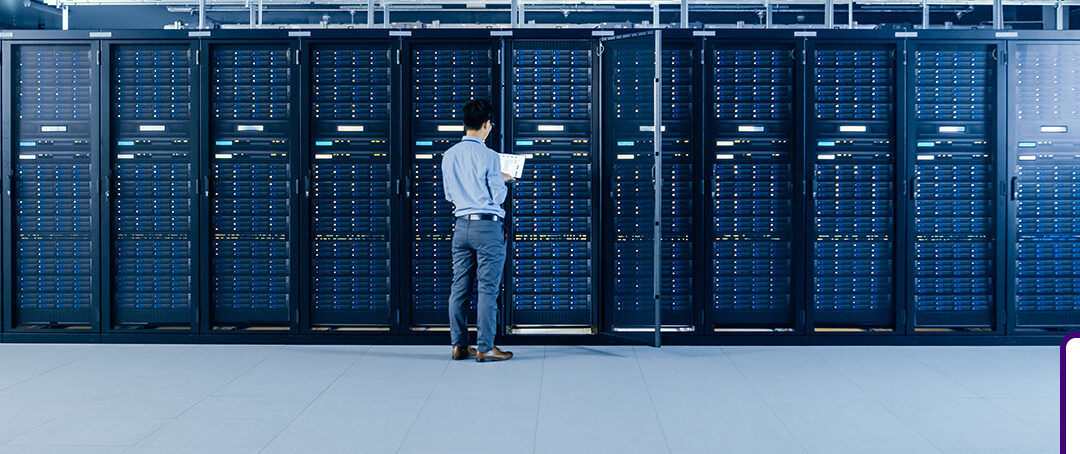The emergence of the Internet of Things, or IoT, as it’s commonly known, has been a massive boon to just about every aspect of our society. It allows a multitude of physical objects in our everyday lives to connect us to the Internet. Popular products include home voice controllers, smart watches, doorbell cameras, and smart locks.
But it’s more than having internet access to check voicemails or indoor air quality. IoT enables an easy exchange of information, leading to innovations that benefit many high-impact industries (manufacturing, education, elder care), and smart technology development that goes even further.
According to IBM Distinguished Engineer Frank DeGilio, the biggest value of the mainframe and IOT is that the mainframe helps IoT service providers apply a well-managed transactional environment to their networks. This allows them to identify problems in the network, provide services through a service-oriented architecture, and support the use of APIs to fulfill service requirements for IoT devices.
However, with this greater capacity for connectivity comes a greater chance of cyberattack. Cybercriminals have evolved in lockstep with technological innovations, finding new ways to scam, cheat, and otherwise break into both personal and organizational data pools. As more people onboard the IoT, linking their personal devices to create a single shared pool of data, cybercriminals are increasingly likely to target it.
Seamless technology creates vulnerability
The same technology that enables seamless connection between devices also creates a vulnerability. Whichever point of access you use, if it’s compromised, it will compromise everything. This is alarming on a personal note, yes; but just imagine what happens if enterprise-level businesses or institutions like the military experience a breach. A single hacked device could give criminals access to the entire system.
With that scope in mind, how can you protect your organization’s IoT network from being compromised? In this article, we’ll break down the threats you’re up against, the technologies you can leverage to enhance your security, and the role of regulatory agencies in mitigating this threat.
The Threats: Know What You’re Up Against
The first step is to be aware of cybercriminals’ tactics for gaining access to your network. Whether you’re a business looking to protect your mainframe from unnecessary risk or a single user trying to keep your family network safe, cybercriminals will likely use some variant of common scam tactics.
Increase cybersecurity awareness to decrease your organization’s vulnerability to risk. This can include putting device-hardening protocols front and center for IoT devices and patch management for the software running the system.
And it’s not just software. The modern mainframe is more connected to internet services and thus vulnerable to cyber attacks, too. As mainframes become more directly involved in processing IoT data, those risks may only grow.
Additionally, here are some of the most common cyber threats to watch out for:
- Malware
- Distributed Denial of Service (DDoS) attacks
- Social Engineering/Phishing
- Ransomware
- SQL injections
- Man-in-the-Middle attacks
- DNS Tunneling
- Zero-Day Exploits
Most cyberattacks fall into two categories: convincing the user to give cybercriminals access to the system via URL, social engineering, or downloading malware. Or two, exploiting a network vulnerability to gain access through Man-in-the-Middle, Zero-Day Exploits, or DNS Tunneling.
Following cybersecurity best practices like not clicking URLs from emails you don’t recognize can protect you from the former; the latter requires a technology-based solution, as the hacker is exploiting an issue with the network itself. Patching that out requires an external component, covered below.
New Technologies Enhance Cybersecurity
Do you know what threat intelligence is? It’s not just knowing about the many different kinds of cyberattacks, though it is a component. True threat intelligence is having a network to detect and agilely respond to early signs of a cyberattack. It’s very, very difficult for users to perform this role themselves, especially with some of the sneakier attacks.
Creating a security network that allows you to achieve a high level of threat intelligence requires connecting various vital components, like:
- Antivirus software: Protects against malware by identifying, separating, and eliminating malicious code. Many antivirus solutions also have components that pre-flag dangerous websites, warn about trojan horses, and automatically run periodic scans of your connected devices.
- VPNs: Virtual Private Networks are becoming increasingly popular with consumers who value their privacy. They work by funneling all of your internet activity through an encrypted channel. This makes it harder for cybercriminals to tap into your network’s vulnerabilities, shielding your data as you browse.
- Intrusion prevention systems: These solutions scan your traffic to block incursions in real-time, slamming and locking the door on unwanted intruders on your network.
- Zero-trust architecture: Zero-trust architecture requires every user attempting to connect to your network to identify themselves with rigorous, multi-factor authentication systems.
Personal users will likely use one or two of the above solutions, but organizations with high-value data should endeavor to employ them all. Cybercriminals will take advantage of any form of complacency to get into your mainframe and collect as much data as possible, so properly safeguarding and maintaining your network security is paramount.
Data Breach Recovery
No matter how careful you are, there’s still a chance a cybercriminal will sneak through your defenses. It’s therefore crucial to have a data recovery plan in place, as you’ll want to mitigate the consequences as much as possible. Data recovery plans ensure compliance with federal and state regulations, allow you to reduce the number of individuals impacted by the breach, and empower you to regain public trust as swiftly as possible.
Ultimately, according to SHARE, with careful consideration to security and strong corporate governance, the mainframe could be a major asset to both IoT service providers and the companies that rely on connected devices to drive everyday business. Remember, your systems are only as strong as their weakest link. Reinforce them all, and you’ll be set to leverage all of the IoT’s benefits with fewer data risks.









0 Comments